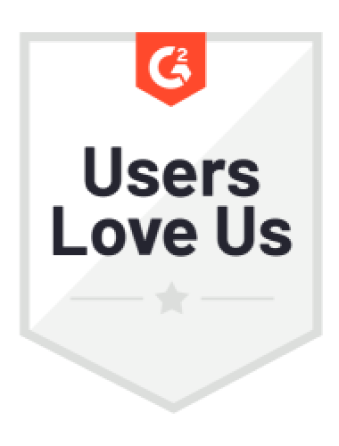Data Catalog Tool Comparison: Acryl vs. Metaphor
Welcome to this comparison of data catalog tools: Acryl and Metaphor. Organizations are faced with the challenge of managing and leveraging large volumes of data effectively. Data catalog tools play a crucial role in streamlining data management processes, improving data quality, and enhancing overall data governance. In this article, we will delve into the key features, strengths, and weaknesses of two leading data catalog tools: Acryl and Metaphor. By the end, you'll have a clear understanding of how these tools can benefit your organization and which one may be the best fit for your specific needs.
Understanding Data Catalog Tools
Data catalog tools are designed to help businesses organize, curate, and discover data assets across their organization. With the exponential growth of data, these tools provide a centralized repository where users can easily search, understand, and access data assets. They enable data governance, data lineage, metadata management, and collaboration, empowering teams to make informed decisions based on accurate and trustworthy data. Data catalog tools are especially valuable for large enterprises, where data is often siloed across various departments, systems, and formats.
The Role of Data Catalog Tools in Business
Data catalog tools play a vital role in modern business operations. By providing a holistic view of the organization's data landscape, these tools empower users to leverage data as a strategic asset. They enable effective data governance, ensuring data quality, security, and compliance. Moreover, data catalog tools foster collaboration and knowledge sharing, bridging the gap between business and IT teams.
Imagine a scenario where a marketing team wants to launch a new campaign targeting a specific customer segment. Without a data catalog tool, they would have to rely on fragmented data sources, making it difficult to gain a comprehensive understanding of their target audience. However, with the help of a data catalog tool, they can easily search for relevant customer data, such as demographics, purchase history, and online behavior. This allows them to create personalized marketing messages and optimize their campaign strategies, resulting in higher customer engagement and conversion rates.
Key Features of Effective Data Catalog Tools
Effective data catalog tools offer a range of features that enhance data management processes. These include:
- Data Discovery: The ability to search and explore data assets based on various criteria, such as keywords, tags, or data attributes.
- Data Lineage: The ability to track the origins and transformations of data, ensuring transparency and trustworthiness.
- Data Classification: The ability to categorize and classify data based on industry standards or custom taxonomies, facilitating data organization and retrieval.
- Metadata Management: The ability to capture and maintain metadata, providing valuable context and documentation for data assets.
- Data Collaboration: The ability to share, annotate, and discuss data assets, fostering teamwork and knowledge exchange.
These features form the foundation for effective data catalog tools and are integral to their success in driving data-driven decision-making within organizations.
Furthermore, data catalog tools often provide advanced analytics capabilities, allowing users to gain deeper insights from their data. For example, they may offer built-in data visualization tools that enable users to create interactive dashboards and reports. This empowers business users to explore data trends, identify patterns, and make data-driven decisions in real-time.
In addition, data catalog tools can integrate with other data management systems, such as data warehouses and data lakes. This seamless integration enables users to access and analyze data from multiple sources, providing a comprehensive view of the organization's data ecosystem. By breaking down data silos and promoting data democratization, these tools facilitate cross-functional collaboration and innovation.
Introduction to Acryl
Acryl is a powerful data catalog tool that offers a wide range of features designed to streamline data management processes. It stands out for its user-friendly interface and robust capabilities, making it a popular choice for organizations seeking an intuitive solution.
Overview of Acryl's Features
Acryl offers a comprehensive set of features that enable users to efficiently manage their data assets. Some of the key features include:
- Data Curation: Acryl allows users to organize and curate data assets, ensuring data consistency and accuracy.
- Data Lineage and Impact Analysis: With Acryl, users can easily trace the lineage of data and understand its impact on downstream processes or reports.
- Data Quality Management: Acryl provides tools for data profiling, cleansing, and validation, allowing users to improve data quality and integrity.
- Collaboration and Knowledge Sharing: Acryl offers a collaborative workspace where users can share insights, annotate data assets, and collaborate with stakeholders.
Pros and Cons of Using Acryl
Like any tool, Acryl has its strengths and weaknesses. It's important to consider these factors when evaluating whether Acryl is the right choice for your organization.
Pros:
- Intuitive and user-friendly interface, making it accessible for users across all levels of technical expertise.
- Robust data lineage and impact analysis capabilities, providing valuable insights into data dependencies.
- Advanced data quality management features that enable users to improve data reliability.
- Seamless integration with existing data systems and tools, ensuring a smooth transition and minimal disruption.
Cons:
- Limited support for complex data workflows and transformations, which may pose challenges for organizations with highly customized data processes.
- Relatively high pricing, especially for small to medium-sized businesses.
Introduction to Metaphor
Metaphor is another popular data catalog tool known for its comprehensive feature set and robust capabilities. It offers a wide range of features designed to meet the diverse data management needs of organizations.
Overview of Metaphor's Features
Metaphor boasts a rich set of features that provide organizations with powerful data management capabilities. Some of the notable features include:
- Data Cataloging and Classification: Metaphor enables users to catalog and classify data assets using customizable taxonomies, facilitating efficient data discovery and retrieval.
- Data Lineage and Impact Analysis: Metaphor offers extensive data lineage capabilities, allowing users to trace the origins of data and assess its impact on downstream processes.
- Data Governance and Compliance: Metaphor provides a robust framework for data governance, ensuring adherence to data policies, regulatory requirements, and industry standards.
- Data Collaboration and Sharing: Metaphor's collaborative features enable users to share, annotate, and collaborate on data assets, fostering teamwork and knowledge exchange.
Pros and Cons of Using Metaphor
As with any tool, Metaphor has its strengths and weaknesses. Let's take a closer look at what makes it stand out and where some drawbacks may lie.
Pros:
- Extensive data cataloging and classification capabilities, providing a structured approach to organizing and discovering data assets.
- Robust data governance and compliance features, ensuring data security and regulatory compliance.
- Powerful data lineage and impact analysis capabilities, enabling users to understand data dependencies and make informed decisions.
- Flexible and customizable interface, allowing organizations to tailor the tool to their specific requirements.
Cons:
- Steep learning curve for users who are new to data catalog tools, requiring dedicated training and onboarding.
- Limited integration options with other data systems and tools, potentially causing interoperability challenges.
Detailed Comparison Between Acryl and Metaphor
Comparison of User Interface
The user interface (UI) of a data catalog tool plays a crucial role in user adoption and overall user experience. Both Acryl and Metaphor offer user-friendly interfaces with intuitive navigation and visually appealing displays. However, Acryl stands out for its simplicity and ease of use, making it an ideal choice for organizations seeking a tool that requires minimal training. On the other hand, Metaphor offers a more customizable interface, giving organizations the flexibility to tailor the tool to their specific needs.
Comparison of Data Management Capabilities
When it comes to data management capabilities, both Acryl and Metaphor excel in different areas. Acryl shines in data quality management, providing advanced features for profiling, cleansing, and validation. This makes it a preferred choice for organizations that prioritize data accuracy and reliability. On the other hand, Metaphor offers robust data governance and compliance features, making it an excellent option for organizations operating in highly regulated industries.
Comparison of Integration and Compatibility
Integration and compatibility are vital considerations when selecting a data catalog tool, as they determine the tool's ability to seamlessly integrate with existing data systems and tools. Acryl offers broad compatibility, with out-of-the-box connectors for popular data platforms, databases, and BI tools. This facilitates a smooth integration process and ensures minimal disruption to existing workflows. Metaphor, while also offering integration capabilities, may require more extensive customization and configuration to meet specific integration requirements.
Pricing Analysis
Acryl Pricing Structure
Acryl's pricing structure is based on a subscription model, with different tiers and pricing options depending on the organization's size and data management requirements. While pricing can be relatively high, larger enterprises may find the investment worthwhile given the tool's robust features and capabilities.
Metaphor Pricing Structure
Metaphor employs a similar subscription-based pricing model, offering different plans tailored to the organization's needs and scale. Although pricing can be a significant factor, organizations that require comprehensive data governance and compliance features may find it a valuable investment.
In conclusion, both Acryl and Metaphor are powerful data catalog tools that offer a range of features to meet diverse data management needs. Acryl excels in user-friendliness and data quality management, while Metaphor shines in data cataloging and governance capabilities. When selecting between the two, consider factors such as user interface preferences, data management priorities, integration requirements, and budget constraints. Both tools have their strengths and weaknesses, so it's important to evaluate them against your organization's specific needs and objectives. Ultimately, the right choice will depend on your unique data management requirements and long-term business goals.
Having explored the capabilities of Acryl and Metaphor, it's clear that the right data catalog tool can significantly enhance your organization's data governance and analytics. If you're looking for a solution that combines the strengths of both tools with the added benefits of AI assistance and user-friendly interfaces, consider CastorDoc. CastorDoc's advanced governance, cataloging, and lineage capabilities, paired with its AI assistant, make it an exceptional choice for businesses aiming to enable self-service analytics and empower their teams. Experience a new era of data management where control, visibility, and intuitive accessibility converge. Check out more tools comparisons here and discover how CastorDoc can transform your data governance and utilization.
You might also like
Get in Touch to Learn More



“[I like] The easy to use interface and the speed of finding the relevant assets that you're looking for in your database. I also really enjoy the score given to each table, [which] lets you prioritize the results of your queries by how often certain data is used.” - Michal P., Head of Data




.png)
%202.png)

%202.png)

%202.png)
%202.png)
%202.png)

%202.png)


%202.png)

%202.png)


.png)

